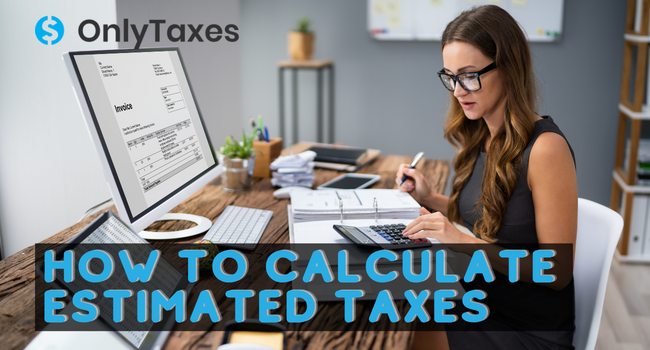It’s exciting when you start earning money from your content, but as an adult content creator, taxes can sneak up on you. Since you’re not working as a regular employee, you must pay estimated taxes to keep you on track.
In this blog, we’ll look at estimated taxes, who needs to make them, and how to calculate them.
What are Estimated Taxes?
Most people are used to being paid through a W-2, and they have taxes withheld from each paycheck. When you’re a W-2 employee, your employer regularly submits the withholding to the IRS and your state for you.
Taxes are not withheld from your payments when you’re an independent contractor or content creator paid through a hosting platform.
Estimated tax payments allow you to pay taxes on any income (including independent contractor payments) that doesn’t already have tax withheld from it.
The IRS has specific requirements for how much you must pay in estimated yearly taxes. Paying estimated taxes also prevents you from having a huge tax payment at the end of the year.
Each state has its own requirements for paying estimated taxes, so you should check with your state to ensure that you are also compliant with your state taxes.
Do I Have to Make Quarterly Tax Payments?
In many circumstances, you need to make estimated tax payments.
Generally, you must make estimated tax payments quarterly if both of the following apply:
- After subtracting your withholding and refundable credits, you expect to owe at least $1,000 in tax for the current tax year, and
- You expect your withholding and refundable credits to be less than the smallest of:
-
-
- 90% of the tax to be shown on your current year’s tax return or
- 100% of the tax shown on your prior year’s tax return.
-
If you don’t meet either of the criteria above, you do not need to make estimated tax payments for the year.
You can always make estimated tax payments throughout the year, even if they are not required.

How to Calculate Estimated Taxes
To determine how much you need to pay in estimated taxes, you’ll need to have the following information available:
- Your prior year’s tax return
- Your most recent pay stub (if you also have a W-2 job)
- Your estimated revenue and expenses for the current year from your content creation
You’ll calculate your required estimated tax payments by following these steps:
Step 1: Estimate Your Taxable Income for the Whole Year
When calculating your estimated income, make sure you include all of your sources of income. This can include investment income, wages, content creation earnings, and business income. For business income (including content creation income), you should use your net income (not gross) from the business.
Step 2: Calculate Your Income Tax Rate
Once you’ve projected your total annual income, check your numbers against the IRS tax brackets to find your tax rate. Tax rates will differ depending on your filing status, such as single, married filing jointly, etc.
Step 3: Factor in Self-Employment Tax if you made over $400
The self-employment tax calculation can be complicated if you have both wage and content creation income. If your total earnings for the year from all your wage and content creation work is less than the social security maximum, your self-employment taxes will be 15.3%. If your total earnings are over the social security maximum, then you’ll need to use the IRS worksheets to determine your self-employment taxes.
Step 4: Add it all up and divide by four.
Combine your income tax estimate and self-employment tax estimates. To avoid penalties and interest for underpayment of estimated taxes, you need to pay the lesser of 100% of your prior year’s taxes or 90% of the current year’s taxes. Once you’ve determined which is less, you can use the following to calculate your required estimates for the year.
You need to make 25% of your estimated tax payment due each quarter. Note that the IRS does not schedule tax payments at even intervals throughout the year. Estimated tax payments are always due on April 15, June, October, and January.
The IRS provides an estimated tax payment worksheet. You can find it on page 8 of the instructions for Form 1040-ES for individual filers.
If you create content as a corporation, you must also pay estimated tax payments. Corporations make their payment using From 1120-W.
The IRS estimated payment worksheets walk you through determining your estimated tax payments.
You can use your estimated taxes as credits against your taxes due for the year. After considering your estimated tax payments, any remaining tax is due by tax day (usually around April 15) of the following year.
How to Pay Estimated Taxes:
There are several options for paying estimated tax payments.
You can pay your estimated taxes online. Simply go to IRS.Gov and follow the simple payment instructions. However, you will need to verify your identity, so you’ll need to know your filing status and address one of your previous tax returns. You can make same-day payments through the website. Note that you are can only show two payments each day, so you will only be able to schedule some of your payments for the year.
The IRS also offers online payments through EFTPS. The benefit of using EFTPS is that you can schedule all your payments for the year. However, you must register and wait for a PIN in the mail. Because of the PIN, you will only be able to make a same-day payment if you have already registered.
Final Thoughts on Estimated Taxes
Paying estimated taxes is crucial to avoiding a large tax bill at the end of the year. If you don’t pay enough estimated tax payments throughout the year, you could pay penalties and interest on the underpayment.
Make sure to make your payments by the filing deadlines. If you miss a payment deadline, make the payment as soon as you realize the error.
Overwhelmed by the thought of having to calculate your taxes due and pay them quarterly? Want to learn about how OnlyTaxes can help you make your estimated tax payments accurately and on time? Contact us now for a no-obligation, one-on-one strategy session to see how much you can save.


